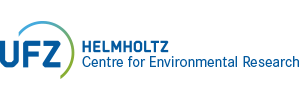Press release from 23 July 2014
Junk DNA not as worthless as once thought
Researchers discover precise regulation mechanisms and suspect correlation with immune response
Around 75 per cent of the supposed functionless DNA in the human genome is transcribed into so-called non-coding RNAs (ribonucleic acid). To date, little is known about its function. Together with colleagues from the Fraunhofer Institute for Cell Therapy and Immunology (IZI) and Leipzig University, researchers from the Helmholtz Centre for Environmental Research (UFZ) have now been able to demonstrate that the production of non-coding RNAs is precisely regulated. They suspect that non-coding RNAs might play a role in regulating cellular processes or in the modified immune response following exposure to environmental toxicants.

In future investigations, Hackermüller and his team therefore want to test the influence that environmental pollutants have on the appearance of non-coding RNAs in immune cells.
Photo: Alexander Raths Fotolia.com
Around two per cent of the human genome acts as a blueprint for proteins, which work as molecular machines assuming important functions in the cells of our bodies. The rest of the genome – still 98 per cent – is more or less a blank page. The areas which do not code for proteins are also referred to as junk DNA. But are they really nothing but a redundant burden? "This is one of the big questions currently hanging over genome research," says Dr Jörg Hackermüller, bioinformatician at the Helmholtz Centre for Environmental Research (UFZ). "They continue to represent vast blank spots on the genomic map – there is still a lot waiting to be discovered here."
As early as 2007, in a study published in the scientific magazine Nature, Hackermüller, together with a number of colleagues, was able to demonstrate that not only two per cent of the genome is transcribed into RNA – a template which normally serves the production of proteins – but practically the entire genome, even those areas which are completely neglected when looking at blueprints for proteins. Hackermüller: "This finding gave rise to a lively discussion as to whether this could be caused by chance events or mistakes in the regulation of cellular processes. However, I doubt that nature is so wasteful with resources that it would produce such masses of RNA for no specific reason.”
In their latest study published in the specialist magazine "Genome Biology", Hackermüller and his team, in cooperation with Professor Friedemann Horn and Professor Peter F Stadler from Leipzig University and the Fraunhofer Institute for Cell Therapy and Immunology IZI, were able to bridge yet another knowledge gap. The transcription of non-coding regions in the genome is precisely regulated by cellular signaling pathways – and on a grand scale: up to 80 per cent of the RNA copies were non-coding. "We did not expect such a magnitude," says Hackermüller. "This is not indicative of a chance product – it is highly likely that the non-coding RNAs perform a similarly important functions to that of protein-coding RNA."
Furthermore, the researchers have discovered a new species of non-coding RNA, so-called macroRNA. It is 50 to 200 times the size of regular, protein-coding RNA. "What is remarkable is that parts of these macroRNAs are conserved throughout mammals as well as birds and reptiles," says Horn. "Furthermore, in aggressive types of brain tumours, several macroRNAs are produced much more actively than in tumours with a good prognosis. This is further evidence that non-coding macroRNAs play an important role in cellular processes."
Hackermüller suspects that non-coding RNAs have an important function at the epigenetic level, for example as a type of cellular long-term memory: "This could also explain why the health effects
caused by exposure to hazardous environmental substances often do not emerge until years later." In future investigations, Hackermüller and his team therefore want to test the influence that
environmental pollutants have on the appearance of non-coding RNAs in immune cells.
Nicole Silbermann
Publication
Hackermüller J, Reiche K, Otto C, Hösler N, Blumert C, Brocke-Heidrich C, Böhlig L, Nitsche A, Kasack K, Ahnert P, Krupp W, Engeland K, Stadler PF, Horn F.
Cell cycle, oncogenic and tumor suppressor pathways regulate numerous long and macro non-protein coding RNAs. Genome Biology 15:R48. 2014.
http://genomebiology.com/2014/15/3/R48
Further information
Helmholtz Centre for Environmental Research (UFZ)
Department Proteomics
Helmholtz University Young Investigators Group Bioinformatics & Transcriptomics
Dr Jörg Hackermüller
Tel +49 (0)341 235 1561
Dr Jörg Hackermüller
Press contact
Helmholtz Centre for Environmental Research
Tilo Arnhold, Susanne Hufe
Tel +49-(0)341-235-1635, -1630
Fraunhofer Institute for Cell Therapy and Immunology (IZI)
Jens Augustin
Tel +49 (0)341 355369320
www.izi.fraunhofer.de/presse.html
Further link
ENCODE Nature 2007: ENCODE Project Consortium. Identification and analysis of functional elements in 1% of the human genome by the ENCODE pilot project. Nature, 447:799-816, 2007.
www.nature.com/nature/journal/v447/n7146/full/nature05874.html
www.izi.fraunhofer.de/uploads/media/070614_Genetischer_Muell_als_Ordnungshueter.pdf
In the Helmholtz Centre for Environmental Research (UFZ), scientists conduct research into the causes and consequences of far-reaching environmental changes. Their areas of study cover water resources, biodiversity, the consequences of climate change and possible adaptation strategies, environmental technologies and biotechnologies, bio-energy, the effects of chemicals in the environment and the way they influence health, modelling and social-scientific issues. Its guiding principle: Our research contributes to the sustainable use of natural resources and helps to provide long-term protection for these vital assets in the face of global change. The UFZ employs more than 1,100 staff at its sites in Leipzig, Halle and Magdeburg. It is funded by the federal government, Saxony and Saxony-Anhalt.
The Helmholtz Association contributes to finding solutions for large and pressing issues in society, science and the economy through excellence in the following six areas of research: energy, earth and the environment, health, key technologies, structure of matter, transport and aerospace. With almost 36,000 employees and coworkers in 18 research centres and an annual budget of approx. 3.8 billion Euros the Helmholtz Association is the largest scientific organization in Germany. Work is conducted in the tradition of the renowned natural scientist Hermann von Helmholtz (1821-1894).
The Fraunhofer Institute for Cell Therapy and Immunology IZI investigates and develops specific problem solutions at the interfaces of medicine, life sciences and engineering. The Institute practices contract research for biotechnological, pharmaceutical and medical-technological companies, hospitals, diagnostic laboratories and research facilities. Within the Business Units of Drugs, Cell Therapy, Diagnostic and Biobanking, the Institute develops, optimizes and validates methods, materials and products. The Institute's core competencies are located in the field of Regenerative Medicine, in particular in the indication areas of oncology, ischemia and autoimmune, inflammatory and infectious diseases. The Institute is clinically oriented and conducts quality checks and the GMP-compliant manufacture of investigational medicinal products. Moreover, the Institute provides support in obtaining manufacturing authorizations and approvals.
